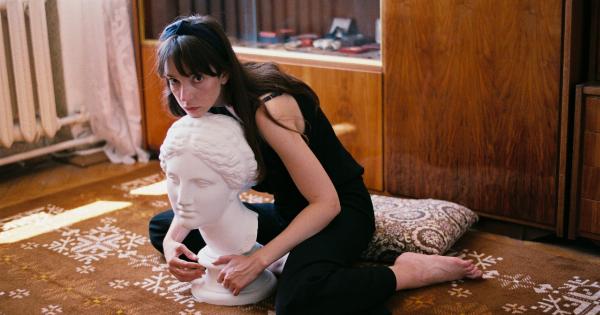Living statue syndrome, also known as catatonia or catatonic syndrome, is a rare and perplexing medical condition that has puzzled doctors and scientists for decades.
The syndrome is characterized by a state of immobility, stiffness, and lack of response to external stimuli, resembling the appearance of a statue. In this article, we delve into the enigmatic world of living statue syndrome, exploring its causes, symptoms, and potential treatments.
The Origins of Living Statue Syndrome
Living statue syndrome was first identified in the late 19th century by French psychiatrist Valentin Magnan.
He observed a group of patients who displayed unusual physical and mental characteristics, including muscle rigidity, mutism, and a tendency to adopt fixed and unnatural postures for extended periods of time. While the exact causes of living statue syndrome remain unclear, several theories have emerged over the years.
Potential Causes and Risk Factors
There is no single definitive cause identified for living statue syndrome, but medical experts believe that a combination of genetic, environmental, and neurochemical factors may contribute to its development.
Some researchers suggest that certain genetic mutations or abnormalities in brain structure and function could increase susceptibility to the syndrome.
Psychological factors, such as severe stress, trauma, or underlying psychiatric disorders, may also play a role in triggering living statue syndrome.
Additionally, certain medications or drug use (particularly psychoactive substances) have been associated with the onset of catatonic symptoms in some cases.
The Enigmatic Symptoms
The hallmark feature of living statue syndrome is a profound state of immobility and lack of responsiveness. Individuals with the condition often appear frozen in time, with a fixed gaze and an absence of voluntary movements.
Some may assume peculiar postures, holding the same position for hours or even days.
Other common symptoms include mutism, rigidity of the muscles, bradykinesia (slowness of movement), echolalia (repetition of words or phrases), and waxy flexibility (maintaining a position after being placed in it by someone else).
Some individuals might also display negativism, resisting attempts to be moved or manipulated.
The Diagnostic Puzzle
Diagnosing living statue syndrome can be a challenging task for healthcare professionals, as the condition shares similarities with other neurological and psychiatric disorders.
Several diagnostic criteria have been established to aid in identifying this mysterious syndrome, including the presence of at least two of the following: immobility, mutism, negativism, posturing, rigidity, or withdrawal.
It is crucial to conduct a thorough medical evaluation to rule out other potential causes, such as Parkinson’s disease, stroke, or certain metabolic disorders.
Laboratory tests, brain imaging scans, and psychiatric assessments may be employed to reach a conclusive diagnosis.
The Treatment Dilemma
Unfortunately, due to the limited understanding of living statue syndrome, there is no specific treatment available.
Management of the condition typically involves a multidisciplinary approach, depending on the severity of symptoms and the individual’s overall health.
Psychotropic medications, such as antipsychotics and benzodiazepines, are often prescribed to help alleviate symptoms and stabilize the person’s mental state.
Additionally, electroconvulsive therapy (ECT) has shown some success in certain cases of catatonia. Physical therapy and occupational therapy may also be beneficial in restoring mobility and improving overall functioning.
Ongoing Research and Hope for the Future
While much remains unknown about living statue syndrome, ongoing research provides hope for further understanding and potential breakthroughs.
Advances in genetics, neuroscience, and imaging technologies open new possibilities for unraveling the underlying mechanisms and identifying targeted treatments.
A better understanding of the genetic and neurochemical factors involved in living statue syndrome could pave the way for personalized therapies and interventions.
Collaborative efforts among researchers, clinicians, and affected individuals are crucial in advancing our knowledge and improving the quality of life for those living with this puzzling condition.
Conclusion
Living statue syndrome continues to captivate the medical community and society at large due to its mysterious nature.
From its origins and potential causes to the enigmatic symptoms and diagnostic challenges, this syndrome presents a puzzle that demands further exploration.
While there is currently no cure for living statue syndrome, ongoing research provides hope for improved understanding, diagnosis, and treatment options.
The collaboration between medical experts and the affected community holds promise for unraveling this medical mystery, offering solace and support to individuals living with this rare condition.































